Note: This fact sheet is also available as a chapter in a comprehensive manual titled Dune Restoration and Enhancement for the Florida Panhandle, available in pdf form here: https://edis.ifas.ufl.edu/pdffiles/SG/SG15600.pdf. Please see the manual for more information about other useful and attractive native plants for dunes and for further information about restoration and preservation techniques.
Lamiaceae
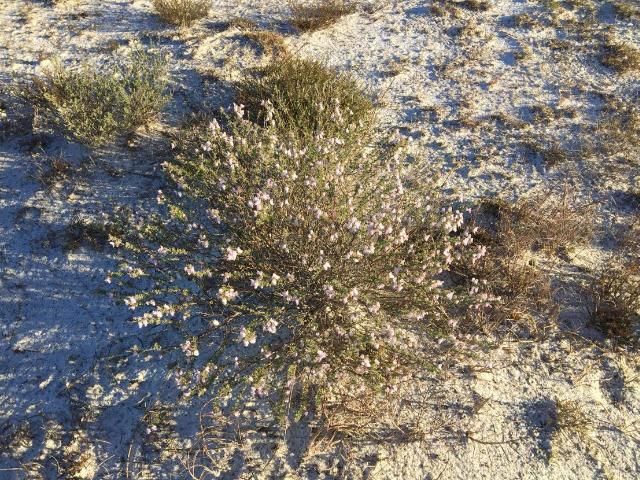
Credit: Gabriel Campbell, UF/IFAS
False rosemary is found on the backsides of foredunes, on all sides of backdunes, and inland in scrub communities. False rosemary is killed by fires but will reseed to an area in the absence of further disturbance. It is endemic to west Florida and Alabama, contributes to beach mouse habitat, and attracts many pollinators.
General Description
False rosemary is an evergreen sprawling sub-shrub that can reach heights and widths of 3 ft.
Stems are pubescent and spreading or erect. Leaves are simple, linear, pubescent, oppositely arranged, and gray. They grow up to ½-inch long, and they smell like mint when crushed. Inflorescences are solitary, axillary, and zygomorphic (two-lipped) with 4 stamens. They have lavender to white corollas with dark spots on the lower lip occurring from March to November. Fruits contain 4 nutlets.
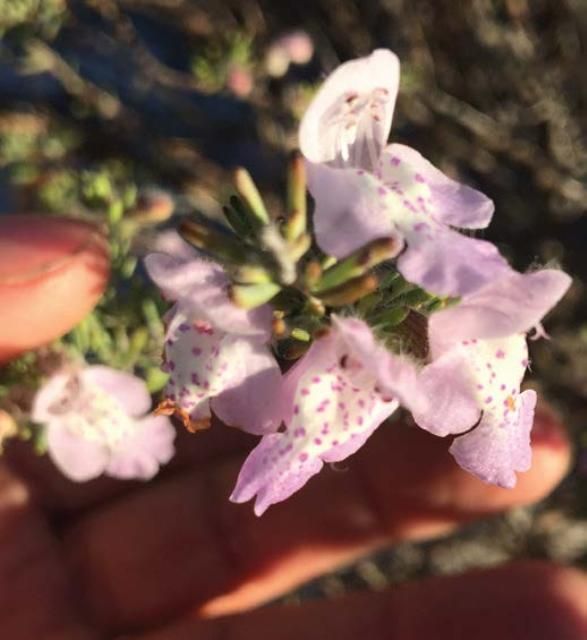
Credit: Gabriel Campbell, UF/IFAS
Propagation
Softwood cuttings can be used for asexual propagation. The following protocol is adapted from Thetford and Miller (2002 and 2004). Four-inch nonbranched terminal shoots should be taken during the growing season. Auxin application improves root number and root length of cuttings. Remove the basal ½ in of foliage and quick dip in liquid auxin for one second or stick the basal ½ to ¾ in of the cutting into auxin talc powder. Root cuttings in 72-cell flats under mist for 3 to 4 weeks followed by hand watering for another 2 to 3 weeks in a well-draining substrate such as 100% pine bark. Cuttings will benefit from fertigation with a complete fertilizer solution providing nitrogen at a rate of 150 ppm 1 to 2 times a week before transplanting to larger containers.
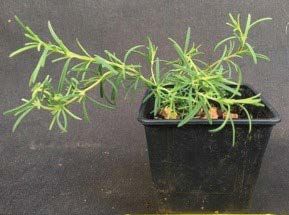
Credit: Gabriel Campbell, UF/IFAS
Plants can be pruned to stimulate branching starting week 4 before or after transplanting to larger pots. Plants perform well in 4-in and 1-qt pots and require 4 to 6 weeks to develop a full rootball and a canopy of 6 to 8 in.
No published information on germination of false rosemary is available. A related species that grows in colder climates, Conradina verticillata, has been shown to require cold stratification (12 weeks at 5°C) to alleviate seed dormancy and light to germinate (Albrecht and Penagos 2012). The authors have noted frequent occurrence of Conradina canescens seedlings in the bare soils and neighboring pots of the nursery production area, suggesting the species will recruit readily from seeds once introduced to an area.
Outplanting
The authors have transplanted false rosemary from 4-in pots to protected back dune and scrub areas with high success. However, tender plants from nursery production areas are very sensitive to high winds and salt spray, suggesting transplants from nursery stock may need to be restricted to areas with less wind and salt spray.
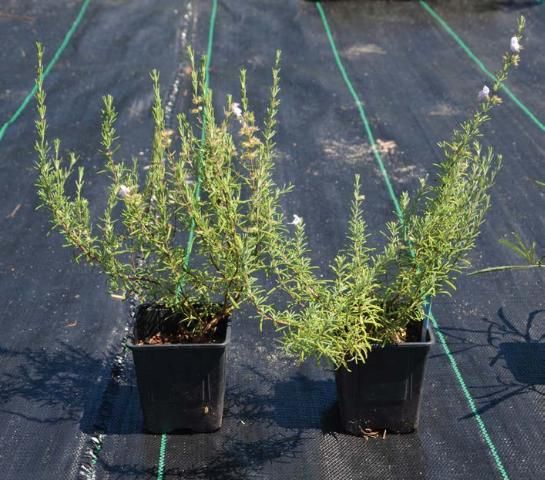
Credit: Gabriel Campbell, UF/IFAS
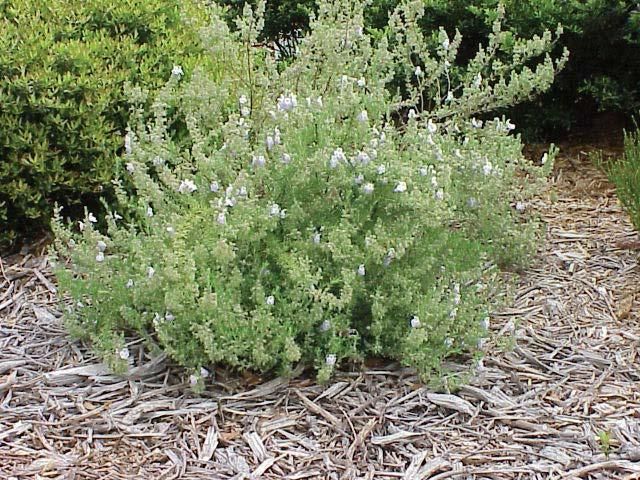
Credit: Mack Thetford, UF/IFAS
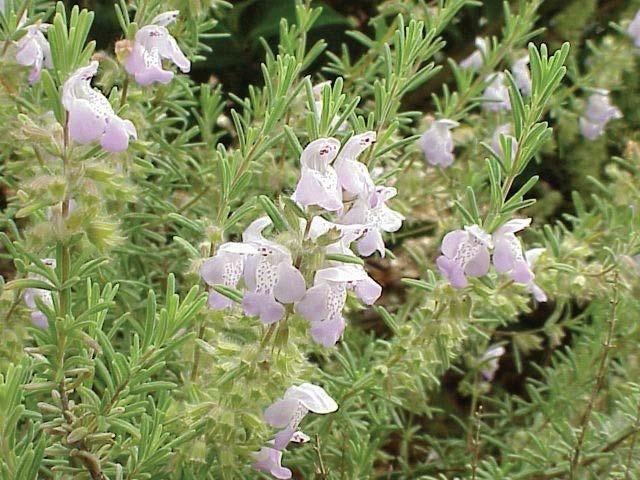
Credit: Mack Thetford, UF/IFAS
Literature Cited
Albrecht, A.A., and J. C. Penagos Z. 2012. "Seed germination ecology of three imperiled plants of rock outcrops in the southeastern United States." The Journal of the Torrey Botanical Society 139(1):86–95.
Thetford, M., and D.L. Miller. 2002. "Propagation of four Florida coastal dune species." Native Plants Journal 3(2):112–120.
Thetford, M., and D.L. Miller. 2004. Propagation and Production of Gulf Bluestem. ENH973. Gainesville: University of Florida Institute of Food and Agricultural Sciences. https://edis.ifas.ufl.edu/ep230
Williamson, G.B., N.H. Fischer, D.R. Richardson, and A. Peña. 1989. "Chemical inhibition of fire-prone grasses by fire-sensitive shrub, Conradina canescens." Journal of Chemical Ecology 15(5):1567–577.